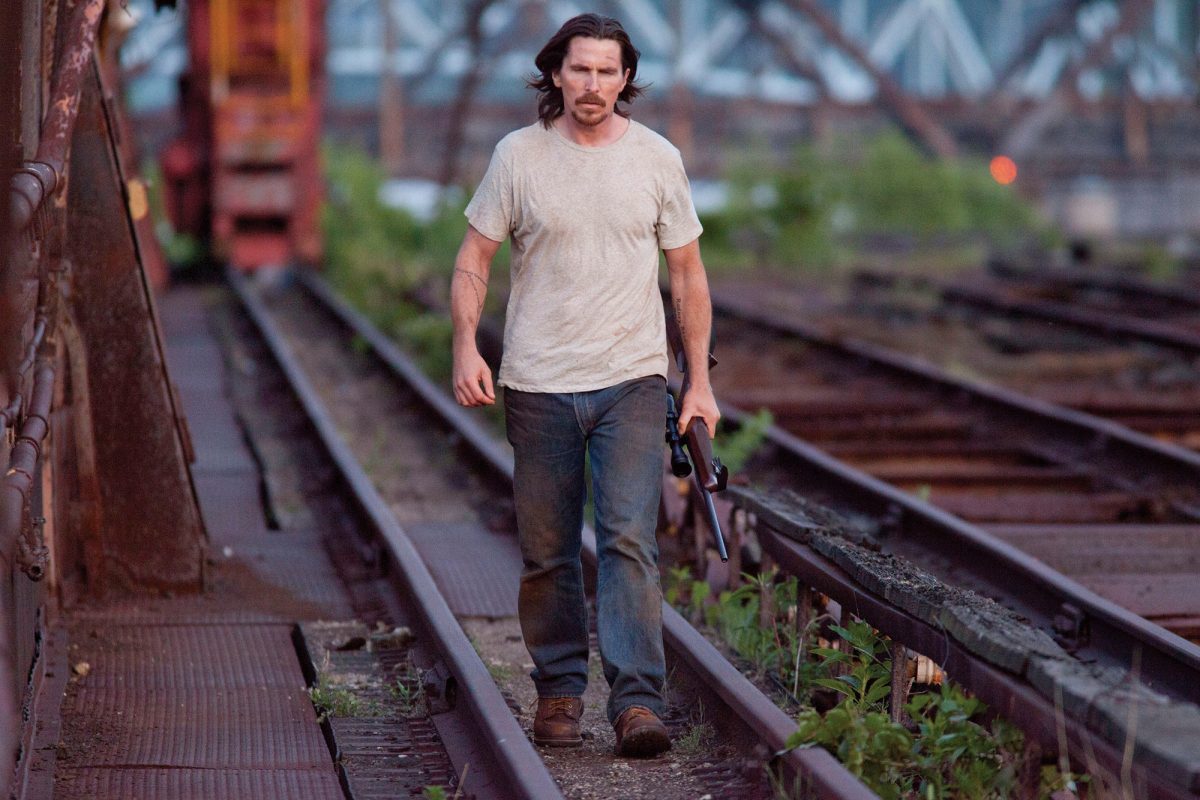 (3.5 / 5)
(3.5 / 5)
Above a dying mining town somewhere in the Rust Belt of the United States, one of the most talented actors of his generation, bearded and disheveled, pauses with a rifle to take a shot.
A deer is in his scopes. Once upon a time, you get the sense, he would have put the creature down without a moment’s thought, but now the act has taken on a symbolic weight that makes the man uncomfortable. He does not take the shot. The deer escapes unscathed.
This is a scene you might have seen back in the cinema in 1978 with Michael Cimino’s The Deer Hunter, arguably the first film to explore the impact of the Vietnam War on the American psyche. It seems unlikely that the second film to feature a similar scene, Scott Cooper’s Out of the Furnace, will have quite the same effect on the cinematic consciousness, but nor does it really aspire to.
Out of the Furnace is a lean drama-thriller that would likely have slipped completely under the radar were it not for a highly impressive cast. Instead of Robert DeNiro as a protagonist, we have Christian Bale, currently in contention for a Golden Globe for American Hustle (yes!).
Working in the steel mill, comfortably dating Zoe Saldana, Russell Baze seems content with his slightly ramshackle existence. There’s no chance of him going anywhere: he spends his night’s at a local bar, visits his dying father on a daily basis. His brother Rodney (Casey Affleck) falls into the role of troubled veteran newly returned from the Middle East.
The conflict may have changed, but the context of urban dilapidation thirty-something years on is very much the same. Apart, that is, from Harlan DeGroot.
Harlan DeGroot, played by Woody Harrelson, feels like he’s stepped out of a different film. An antagonistic backwoods psychopath, Harrelson naturally brings an unstable vibe to the role. This is a man who lights his cigarettes with a blow-torch, who brutally assaults an unfortunate interloper who attempts to stop him abusing a hook-up at a drive-in movie. Apart from a brief moment of terrifying tenderness – he dabs the face of a wounded fighter – DeGroot is pure and simply monstrous.
Rodney’s gambling problem and a refusal to settle into a nine-till-five puts him in hock with Willem Dafoe’s put-upon bookie, Petty, who refuses to cut Rodney off but is worried that he will one day have to hurt him. Tanned and bouffant, chewing gum and a leather jacket, Dafoe’s presence encapsulates the film. It might be the boonies, but this is a civilized world where people talk out their problems over a drink; all except for DeGroot.
Leader of a clan of dangerous hillbillies, you know Rodney is doomed from the instant he enters DeGroot’s sphere. DeGroot’s brutality is contrasted with Russell’s tenderness with Lena, his girlfriend, but this is the type of world sound-tracked by Bruce Springsteen; a gritty, industrial, post-agrarian world where nothing thrives. Even police officer Wesley Barnes (a criminally under-utilized Forrest Whitaker) is cosseted.
Christian Bale is recognizably beard and straggly as Christian and displays his customary intensity: unlike with Cooper’s Crazy Heart, an otherwise film for which Jeff Bridges won 2009 Best Actor, this is not an acting showcase. It’s a study in slightness, in intentions gone awry. Casey Affleck is equally on familiar form as the traumatized younger Baze; a shave-headed loser trapped by the US military’s stop-loss program and unable to return to civilian life.
Despite its storytelling debts, Out of the Furnace mostly manages to sidestep cliche. After drink driving, Russell ends up involved in a car crash that puts him in jail for a spell, estranging him from Lena. Bale’s wide-eyed shock at the scene – the crumpled-in car door that won’t open, the child’s be-socked feet visible in the back seat – has him looking like Paul Dano: all inarticulate shock.
The prison is not predominated by skinheads and the time Russell spends in church never lingers on the religious iconography. Out of the Furnace is built on quiet human truths, Elmore Leonard without the dialogue (indeed, you might wish for a touch more talking). There’s nothing particularly profound about it and if the film’s final act steers into Death Sentence territory, it at least has never before been set among the deserted highways and byways of Ramapo County, New York.
As Bob Dylan recently sang, “This is hard country to stay alive in”: you’ve got to do what you can to make it through the day. Out of the Furnace is by no means as remarkable as it predecessor, but it’s remarkably solid.
